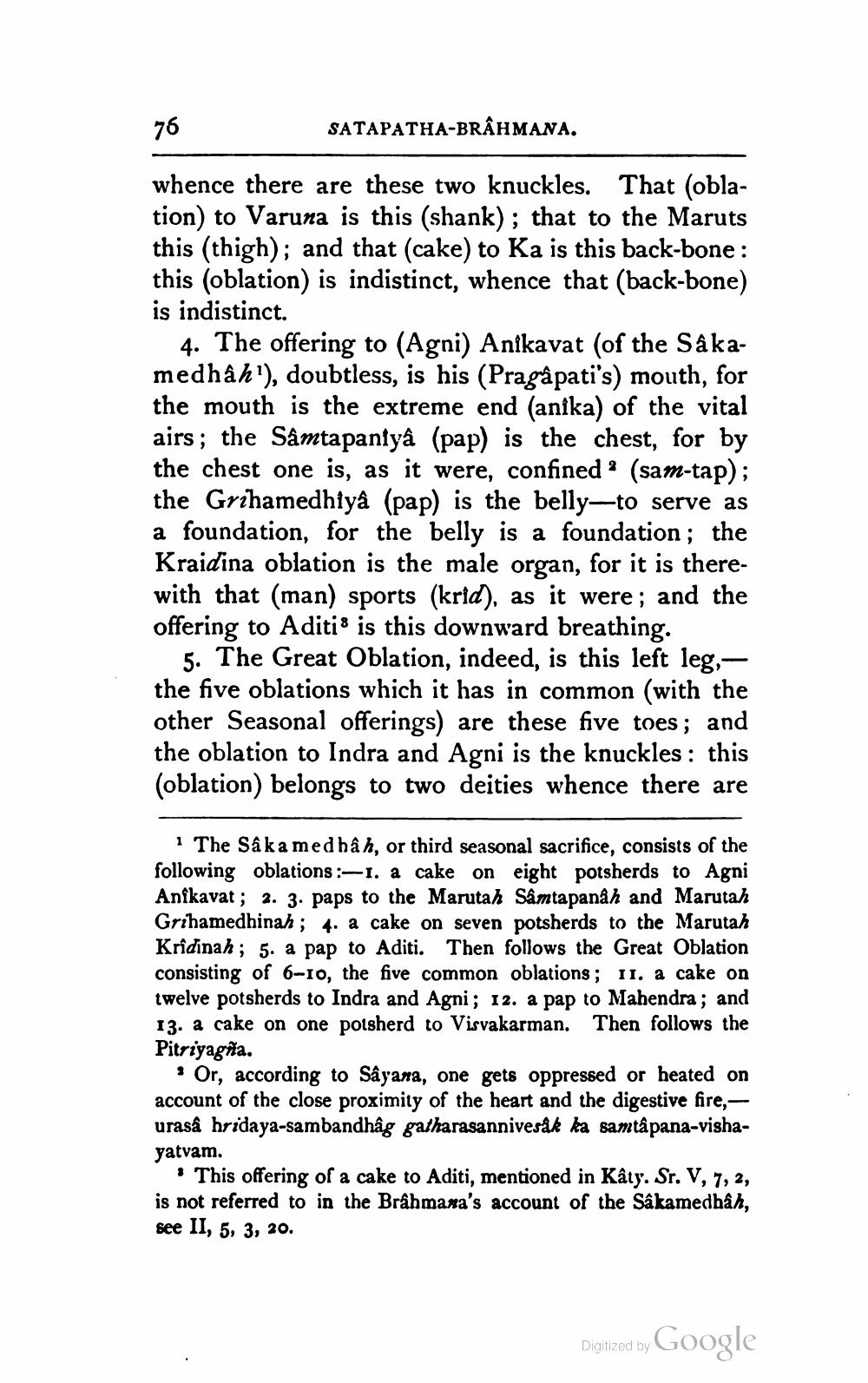________________
SATAPATHA-BRÂHMANA.
whence there are these two knuckles. That (oblation) to Varuna is this (shank); that to the Maruts this (thigh); and that (cake) to Ka is this back-bone: this (oblation) is indistinct, whence that (back-bone) is indistinct.
4. The offering to (Agni) Anikavat (of the Sakamedhâh'), doubtless, is his (Pragâpati's) mouth, for the mouth is the extreme end (anika) of the vital airs; the Sâmtapaniyâ (pap) is the chest, for by the chest one is, as it were, confined (sam-tap); the Grihamedhiya (pap) is the belly—to serve as a foundation, for the belly is a foundation; the Kraidina oblation is the male organ, for it is therewith that (man) sports (krid), as it were; and the offering to Aditi8 is this downward breathing.
5. The Great Oblation, indeed, is this left leg,the five oblations which it has in common (with the other Seasonal offerings) are these five toes; and the oblation to Indra and Agni is the knuckles : this (oblation) belongs to two deities whence there are
1 The Såka med hâ h, or third seasonal sacrifice, consists of the following oblations :- 1. a cake on eight potsherds to Agni Anikavat; 2. 3. paps to the Marutah Samtapanah and Marutah Grihamedhinah; 4. a cake on seven potsherds to the Marutah Kridinah; 5. a pap to Aditi. Then follows the Great Oblation consisting of 6-10, the five common oblations; 11. a cake on twelve potsherds to Indra and Agni; 12. a pap to Mahendra; and 13. a cake on one potsherd to Visvakarman. Then follows the Pitriyagña.
• Or, according to Sâyana, one gets oppressed or heated on account of the close proximity of the heart and the digestive fire,uraså hridaya-sambandhậg gatharasannivesak ka samtâ pana-vishayatvam.
"This offering of a cake to Aditi, mentioned in Kâty. Sr. V, 7, 2, is not referred to in the Brahmana's account of the Sakamedhåh, see II, 5, 3, 20.
Digitized by Google




